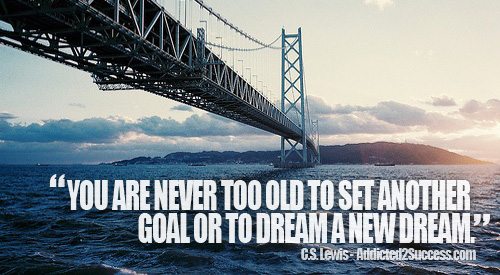Success Advice
Why Entrepreneurship Isn’t Just for Young People

“Age is an issue of mind over matter. If you don’t mind, it doesn’t matter.” These are the words of the legendary American author and humorist “Mark Twain“. Age really is nothing but a number and this has been proven time and time again.
Read on as Author & Seasoned Entrepreneur Kevin D. Johnson breaks it down on why Entrepreneurship Isn’t Just For Old People.
Entrepreneurship Can Start At Any Age
“I’m too old to start a business,” said my forty-four-year-old friend when I encouraged her to become an entrepreneur. I shook my head as she rambled on about how she has too many responsibilities and how she’s not as creative as she used to be. Her excuses were ridiculous, but all too common for people her age.
As the media focus on young CEOs like Facebook’s Mark Zuckerberg and Instagram’s Kevin Systrom, it is easy to assume that most companies these days are started by teenagers and people in their twenties. Consequently, many older people buy into this media hype and think that starting a company is for young people, accepting that their chances of success are limited by their age. This assumption and the media hype couldn’t be further from the truth.
First, the media hype is heavily focused on the technology sector, which tends to glorify young superstars. When it comes to what is most appealing to the media, the new social media company always overshadows the new bakery on Main Street. However, most new businesses in the United States aren’t tech-related and sexy. They will be primarily sole proprietorships and small businesses with fewer than five employees. Most of their owners will be old enough to a tech guru’s mother or father.
Second, older people are starting more businesses than people in their teens and twenties. According to a Kauffman Foundation study, Americans between the ages of thirty-five and forty-four represented the largest increase in entrepreneurial activity from 2008 to 2009. Americans between ages fifty-five and sixty-four constituted the second-largest jump. The reasons range from middle-aged adults wanting to supplement their income to retired individuals wanting to continue working. Regardless of the reasons, older Americans are catching the entrepreneurial bug, which is good news for everyone. Unfortunately, we don’t hear enough about these exciting data.
Interestingly, research shows that older people are more likely to be successful when they start businesses. Older entrepreneurs have the experience needed to better navigate the rough waters of entrepreneurship. During years of work, they have developed a treasure chest of skills that makes them highly valuable. For instance, if they go into business in the same industry in which they worked for many years, their understanding of the business is a tremendous competitive advantage.
In other good news, University of Chicago economist David Galenson contends that “experimental innovators” require time to reach their peak. His research, which is largely credited with cracking the code of the creative mind, concludes that experimental innovators do their best work in life at an older age. They accomplish their genius through trial and error. Examples of these innovators are Steve Jobs, Mark Twain, and Alfred Hitchcock.
Older people may give a bunch of reasons for saying they are too old to start a business, but they are just excuses, many of which are defended with misinformation. Now we have plenty of data and reasons to support why being in your later years is an asset, not a liability, when starting a business. If you are in your early thirties, forties, or older, it is not too late to start a business. Don’t let your age deter you from pursuing your dream. Ultimately, a solid business idea paired with flawless execution, not a fresh face, is what leads to success in business.
Article originally appeared here: The Entrepreneur Mind
Make sure you get your hands on Kevin D. Johnson’s Book: The Entrepreneur Mind: 100 Essential Beliefs, Characteristics, and Habits of Elite Entrepreneurs
This book is a must have for any aspiring entrepreneur.
Entrepreneurs
The Essential Skills Every Entrepreneur Needs In 2026
Success in the digital age isn’t about luck. It’s about mastering the skills that separate dreamers from doers.

When I was 22 years old, I started my first side hustle as a ghostwriter. (more…)
Did You Know
The Success Patterns You Inherited (And Didn’t Notice)
Your family history may hold the key to why you think, act, and feel the way you do today.

Who are you? Your experiences and your family’s narratives and legacies contribute to your identity. Your ancestry contains individual traits and forces that have been inherited over the years. It also carries the fights and victories of your forebears and older family members. (more…)
Shift Your Mindset
11 E’s That Define Every Great Leader And Why Most People Miss Them
If you’ve ever felt the pull to lead, this is your roadmap to turning inner potential into lasting influence.

What Is Leadership, Really?
Leadership is far more than a title or position. It’s the ability to envision a future, inspire others, and align people toward a shared goal. (more…)
Personal Development
This Silent Habit Might Be Sabotaging Your Career
Your temper might be costing you more at work than you realize. Here’s why it matters.

You may be the last to know that you’re walking around with a giant chip on your shoulder. Meanwhile, your coworkers are giving you a wide berth. (more…)
-

 Success Advice4 weeks ago
Success Advice4 weeks agoInside the TikTok Resume Hack That’s Fooling Recruiters (For Now)
-

 Change Your Mindset3 weeks ago
Change Your Mindset3 weeks agoThe One Leadership Habit That Separates the Great From the Forgettable
-

 Personal Development3 weeks ago
Personal Development3 weeks agoThis Silent Habit Might Be Sabotaging Your Career
-

 Business2 weeks ago
Business2 weeks agoWhy Your E-Commerce Fulfilment Is Probably Broken (And How to Fix It)
-

 Shift Your Mindset2 weeks ago
Shift Your Mindset2 weeks ago11 E’s That Define Every Great Leader And Why Most People Miss Them
-

 Did You Know1 week ago
Did You Know1 week agoThe Success Patterns You Inherited (And Didn’t Notice)
-

 Business2 weeks ago
Business2 weeks agoThe Hidden Money Pit in Your Operations (and How to Use It)
-

 Entrepreneurs5 days ago
Entrepreneurs5 days agoThe Essential Skills Every Entrepreneur Needs In 2026



























15 Comments